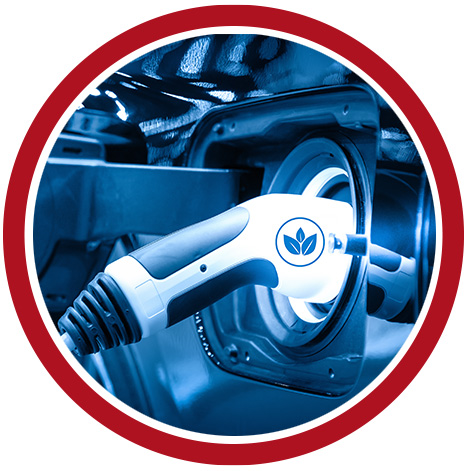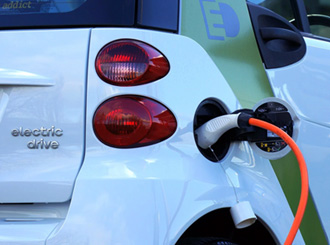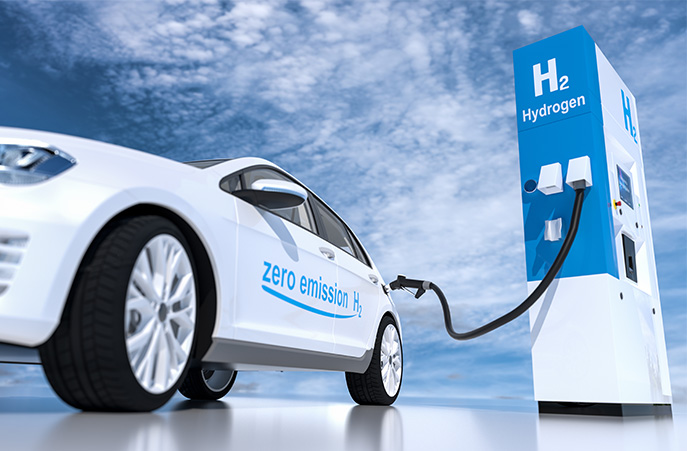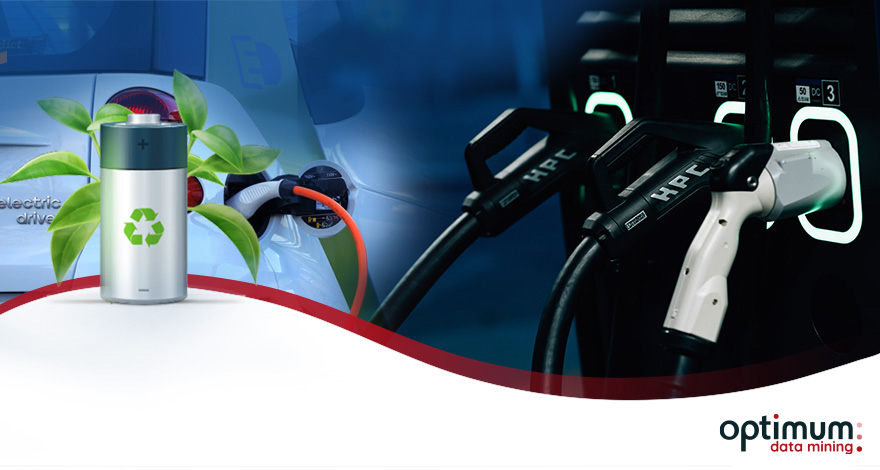Focus on clean vehicles
Faced with the urgency of climate change, companies and public authorities are being urged to make significant and lasting reductions in their greenhouse gas emissions. In France, for example, since 1er On 1 January 2022, the Mobility Orientation Law requires fleets of more than 100 vehicles, 10 %, to renew their fleets with low-emission vehicles (LEVs, i.e. less than 60 g of CO2/km). This rate will increase to 20% in 2024, 35% in 2027 and 50% from 2030.
Fleet electrification is becoming a key issue for fleet managers. But what are the options available: hybrid, electric or hydrogen vehicles? How do you choose the right technology and the right vehicles? How do you manage the thorny issue of locating charging points? How do you ensure business continuity while guaranteeing efficient mobility?
Let's take a look at the advantages and disadvantages of the different possibilities.
The hybrid vehicle
We will only talk about plug-in hybrids here. The "full hybrid" (i.e. self-charging) range is currently too limited to be a real alternative for companies.

The plug-in hybrid vehicle has two engines: an internal combustion engine (petrol, diesel, E85) coupled with an electric engine that must be "manually" recharged at special electrical terminals or traditional mains sockets. The hybrid system works autonomously and can be operated as an electric 100%, or a thermal 100% or a combination of both. Electric 100% operation is often reserved for low-speed urban travel with a relative range (usually less than 80 km). The 100% petrol mode is often preferred for high speed journeys, such as on the motorway, in order not to drain the battery too quickly. In combined operation, the electric motor relieves the combustion engine to reduce fuel consumption or provide extra power.
On paper, the hybrid vehicle has everything to please: ecological, economical, practical, it can cover long distances (similar to those of combustion vehicles) with controlled fuel consumption. The acquisition cost, although higher than that of a combustion vehicle, allows savings to be made on fuel, of course, but also on braking. Indeed, the energy recovery system on deceleration allows the vehicle to slow down with less strain on the brakes.
So does the hybrid vehicle win the game before it starts? This is not easy, especially in the context of business operations. Many companies have actually opted for hybrid vehicles without considering the issue of charging and financing. The result of this unfortunate oversight is rechargeable hybrid vehicles that are not recharged, resulting in higher fuel consumption than their combustion counterparts (due to the weight of the battery).
In fact, it is also important to make this type of vehicle available to drivers whose use is compatible with the strengths of the segment (city, short journeys, etc.).
For rechargeable hybrid vehicles, the question of the location of charging stations (in companies, at employees' homes, etc.) and their financing (compensation for recharging at home) is therefore essential, otherwise the results will be diametrically opposed to the objectives.
The 100% electric vehicle

The electric vehicle has a single 100% electric engine that allows it to be used for all types of travel, often with a range of less than 500km.
Among the strong points of the electric vehicle: exemplary sobriety (0l/100km), non-existent CO2 emissions, appreciable driving comfort and silence, and immediate torque for acceleration worthy of sports cars. Unfortunately, these advantages are offset by a number of disadvantages: limited range (few models exceed 500km), frequency and duration of recharging, quantity and network of recharging points that are often insufficient, uncertain resale prices, etc. All these issues can shake the confidence of a fleet manager. Another disadvantage of choice: is the electric vehicle as ecological as it claims to be?
In use yes, but many studies show that the manufacturing process (extraction of precious minerals needed to make batteries) and recycling of electric vehicles is extremely polluting.
The hydrogen vehicle

Although the name differs, the hydrogen vehicle is an electric vehicle. The power supply is provided not by a battery, but by a fuel cell. The hydrogen is stored under pressure in dedicated tanks. When the hydrogen meets the oxygen in the fuel cell, it produces electricity that powers the electric motor, releasing only water.
The hydrogen vehicle thus combines all the advantages of the 100% electric vehicle while eliminating the main disadvantages: recharging time (filling up with hydrogen) and range are thus equivalent to those of a traditional internal combustion vehicle.
The hydrogen vehicle therefore seems to be the most promising. Here again, there are still a few grey areas: high purchase price, very limited offer from manufacturers to date, very limited number and network of hydrogen stations.
The winner is?

As we have seen, each technology has its advantages and disadvantages. It is therefore not possible to determine a winner in this match, as the choice will have to be made on the basis of a rigorous analysis of current vehicle usage.
To help fleet managers make these choices, Optimum Data Mining, Optimum Automotive?s consulting division, offers audits, particularly on the subject of fleet electrification. The principle is to temporarily connect the vehicles (several connection modes are available) in order to collect, over a significant period, the data required to make decisions for each vehicle.
Examples of data collected, analysed and influencing the final choice: daily mileage, travelled, duration and distance of journeys, duration and location of recurrent stops, etc.
Armed with this information, Optimum Data Mining?s experts will be able to guide you in identifying "electrifiable" vehicles, selecting alternatives that are suited to your drivers? needs, and sizing and installing a coherent recharging infrastructure.


